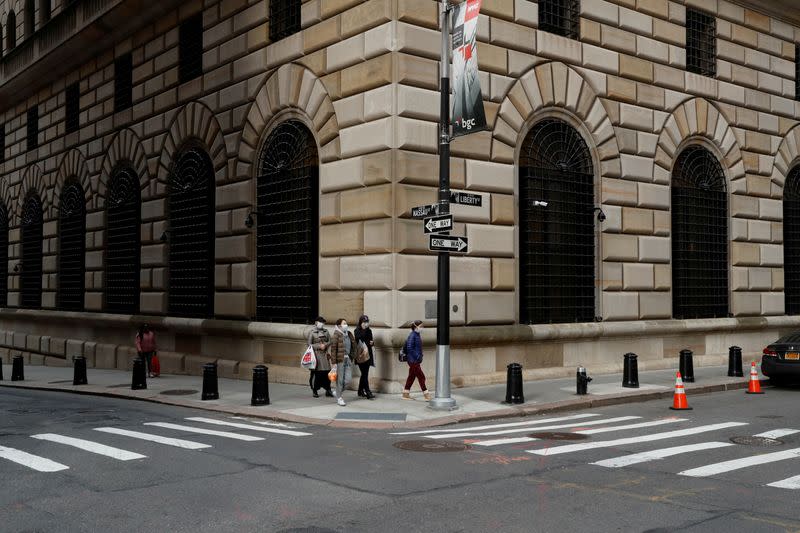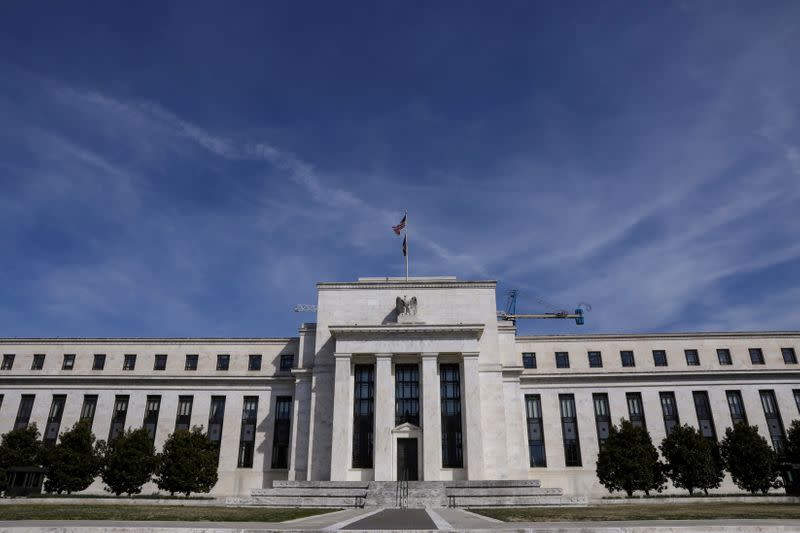Fed policymakers see slow, uneven U.S. recovery after coronavirus downturn
By Jonnelle Marte and Lindsay Dunsmuir
(Reuters) - The U.S. economy could start to recover in the second half of the year after what is shaping up to be the worst recession in decades, but growth is likely to be slow and uneven, several top Federal Reserve policymakers indicated on Tuesday.
Their less-than-sanguine assessments came as a majority of U.S. states began or moved toward reopening their economies, locked down for weeks to slow the spread of the coronavirus.
More than 30 million Americans have filed for unemployment claims in the last six weeks, and U.S. President Donald Trump has pushed for a reboot to economic activity to mend household and corporate balance sheets, even though the coronavirus has continued to spread and U.S. deaths from COVID-19, the disease it causes, have topped 70,000.
"We're living through the most severe contraction in activity and surge in unemployment that we've seen in our lifetimes," Federal Reserve Vice Chair Richard Clarida said in an interview with CNBC. "Unfortunately, the unemployment rate is going to surge to numbers that we've not seen probably since the 1940s."
Economists polled by Reuters estimate unemployment last month rose to 16%. Researchers at the Chicago Fed earlier Tuesday estimated a "U-Cov" jobless rate - a measure they created to capture unemployment in the COVID-19 era that takes account of people not counted in the official numbers, such as those skipping job hunts because of stay-at-home orders - of between 25.1% and 34.6% for April.
Still, Clarida said he was hopeful the Fed could limit lasting damage to the economy, adding that it was "in the range of possibility" for the economic recovery to start in the second half of the year once businesses reopen and people return to work.
Stocks pulled back sharply after his comments, which were not the only dour ones from Fed policymakers on Tuesday.
"There are lots of different possibilities," Atlanta Fed President Raphael Bostic said of the shape of any recovery, noting that in the first instance it hinges on stabilizing the rate of infections. "In many communities the 'V' recovery is going to be very difficult to achieve," Bostic said, referring to a scenario with a swift economic rebound.
U.S. coronavirus infections have continued to mount, topping 1.1 million so far, and some epidemiologists forecast more than 130,000 dead by early August.
"Across the country there has been a fair amount of diversity of experiences, diversity of vulnerability and that will translate into diversity of recoveries," Bostic said.
U.S. Vice President Mike Pence, meanwhile, said on Tuesday the White House could disband its coronavirus task force by month's end.
REOPENING A 'BOLD DECISION'
Chicago Federal Reserve Bank President Charles Evans said it is "reasonable" to expect a return to economic growth in the second half of the year, but that such an outcome is only slightly more likely than other, more pessimistic scenarios.
In a conference call with reporters, Evans said he viewed efforts to reopen the economy, even as the coronavirus pandemic continues, to be a "bold decision with pretty high risks." He added that "the pickup in activity will likely be slow at first."
Some businesses will be able to ramp up even with social distancing and other precautions in place, Evans said, while others, including travel and hospitality services, will not. A lot will depend on how safe consumers feel to be out spending.
If all goes well, he said, unemployment could drop to 5% by the end of next year. A slower decline in the jobless rate could mean longer-lasting damage to the economy, Evan said.
Fellow policymaker St. Louis Fed President James Bullard warned in a different call with reporters that more businesses could fail and non-profits could close if recovery is delayed.
"If the weakness persists in the second half of the year, I think we will have new issues arising if we cannot bring the pandemic under control," he said.
The Fed has slashed interest rates to near zero, promised to keep them there until the economy returns to better health, bought trillions of dollars of bonds and rolled out a suite of emergency lending facilities meant to keep credit flowing to businesses and households.
But the timing of the rebound is not in the Fed's control, the policymakers said.
"This pandemic does pose really considerable risk to the outlook, and the course of the economy is really going to depend on the course of the virus and the mitigation efforts," Clarida said.
(Additional reporting by Howard Schneider and Ann Saphir; Writing by Ann Saphir; Editing by Dan Grebler)


